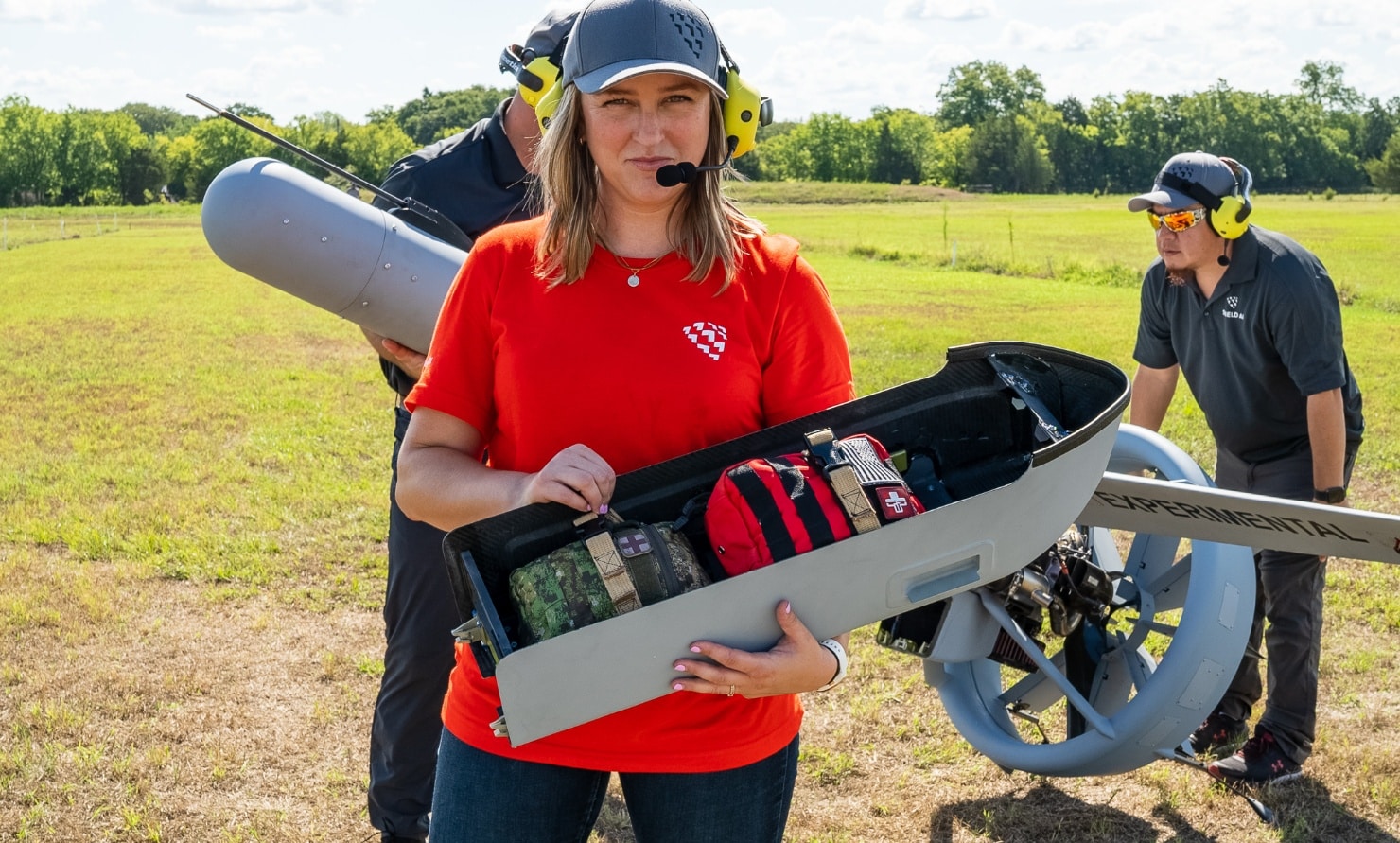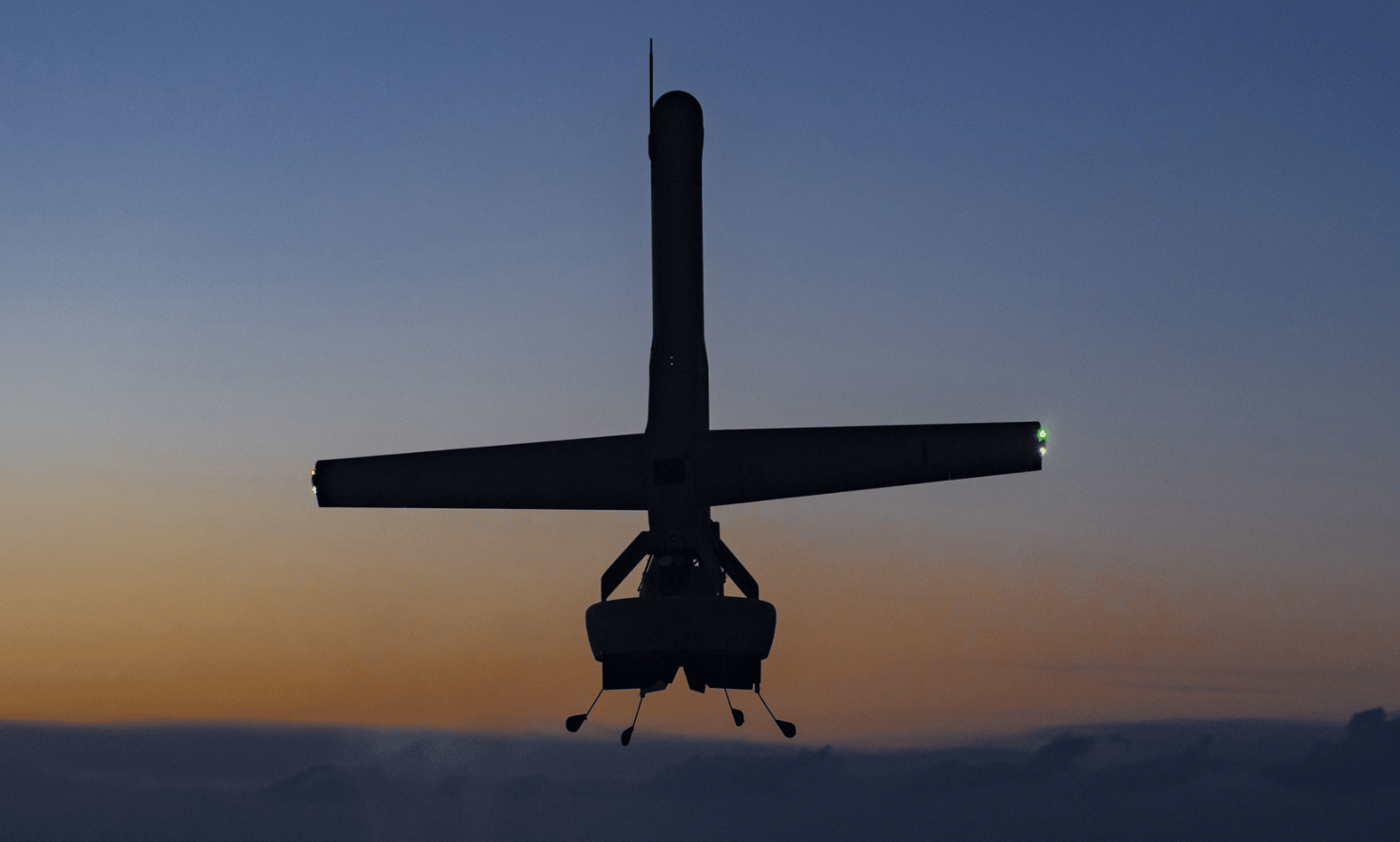[October 5, 2022]
Engineering Innovations with Lifesaving Implications

Jazz is an applied physicist and technical director at Shield AI. She led a V-BAT engineering team that successfully developed a belly bay payload capability and a custom cooling solution for Naval Advanced Medical Development’s (NAMD) & Defense Innovation Unit’s Just-In-Time Delivery Program.
No one said integrating a highly capable expanded belly bay payload onto the V-BAT to deliver life-saving medical supplies would be easy, but they did say it would be rewarding – and they were right. Imagine a Marine platoon in enemy territory that needs blood and supplies because they are under fire and sustaining casualties. It’s going to be a difficult decision to send manned aircraft into that area of conflict because it puts those pilots at risk, and that’s where V-BAT proves it’s worth its weight in gold.
There just simply aren’t enough aircraft and people to accomplish all logistical tasks at sea, and there’s also issues with the cost of fuel and logistics for moving parts via helicopter and other more exquisite assets. The integration of a custom belly bay aboard V-BAT provides the capability to transport medical and cooled payloads – whether that’s blood, human organs, or medical devices – and we’ve demonstrated yet another innovative engineering solution that supports our mission of protecting service members and civilians.
What we developed is not only the external fairing and payload capability, but also a custom cooling solution that will maintain safe temperatures for blood for a duration specified by the military customer. A custom phase-change-material (PCM) filled chamber was developed to maintain the temperature of 1 500 mL unit of blood safely between 0°C and 10°C. With this project, we’ve added an additional 10 pounds of payload for the belly bay to house up to 4 cooled units of blood, which is an exciting improvement to the aircraft’s ship-to-ship and ship-to-shore movement capabilities.
Of course, there were challenges associated with this effort. Incorporating the larger belly bay payload for this program required us to consider V-BAT’s controls, its weight and balance, and the drag of the outer mold line. We wanted to increase the weight capability while also maintaining endurance, so we had to do a lot of modeling and simulation since it was a short design period. We modeled the flight controls impact of an adjusted center of gravity for both hover and fixed-wing flight modes. We also designed the increased volume belly bay with aerodynamic fairings at the leading and trailing edge to combat the drag of the increased surface area. As a result, we observed similar fuel consumption to the baseline aircraft without the belly bay payload capability! We are taking lessons learned from this design effort on to future projects.
The V-BAT is a unique platform because it needs to achieve vertical takeoff and landing, which requires high power and stability. It also needs to have efficient cruise speeds, which contributes to its essential endurance capabilities for diverse mission sets. This presents size, weight, payload, and power challenges. Nevertheless, we continually improve the platform by engineering ways to incorporate versatility functions so it can best respond to a range of operational scenarios. If the operator requires blood or organs, we can deliver those; if they require a med kit, COVID-19 vaccines, Spiderman band-aids, or cold beer — we can deliver those too.
What we demonstrated for this program is just a snapshot of V-BAT’s capability set. The force multiplying effects of the integration of our AI and autonomy software on V-BAT — an already incredibly impressive platform in that it has such a low logistics profile and can operate in challenging maritime and austere environments – will be revolutionary. The milestones we are working towards in the coming months will prove to be industry-defining events, so stay tuned!
This research was, in part, funded by the U.S. Government (NAMD & DIU). The views and conclusions contained in this document are those of the authors and should not be interpreted as representing the official policies, either expressed or implied, of the U.S. Government.









